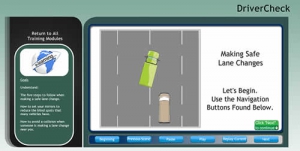 The numbers for trucking fatalities in 2017 are in, and the statistics are grim. Truck driver deaths rose from 786 to 840 from 2016 to 2017, a 6.6% increase. Fatalities caused by large trucks including the motoring public rose by 9% as well, claiming the lives of 4761. Clearly, things need to change.
The numbers for trucking fatalities in 2017 are in, and the statistics are grim. Truck driver deaths rose from 786 to 840 from 2016 to 2017, a 6.6% increase. Fatalities caused by large trucks including the motoring public rose by 9% as well, claiming the lives of 4761. Clearly, things need to change.
Preventing Injuries
While fatalities are the greatest concern, driver safety also includes preventing accidents and injuries. This can range from ensuring employees know how to properly lift boxes while loading and unloading to detailing a proper and thorough pre-trip inspection. Preventing workplace injuries has the added bonus of reducing workers’ compensation claims, which can help keep insurance premiums in check.
Implementing Safety Programs
Encouraging safe driving behaviors requires constant safety efforts. It’s not enough to hold a safety training once per year or during onboarding. Online training programs can help to consistently deliver important updates on safety practices and regulatory compliance. Of course, training isn’t always enough by itself. One of the easiest ways to ensure compliance and driver safety is to reward those drivers with the best driving behaviors and highest safety scores.
Of course, measuring those statistics can be a challenge. By utilizing telematics, fleets can pinpoint numerous driver behaviors both safe and unsafe as well as provide measurable insights. For example, fleets can identify which driver behaviors are causing the most safety incidents (i.e. speeding, hard braking, etc.), and then tailor their training to those issues. Fleets can also use telematics to identify the safest drivers and use them as a tool to train other employees.
If a fleet is unsure where to start, the following are some of the most common safety issues within the transportation industry:
- Distracted driving. Talking, texting, adjusting the radio, or modifying a GPS destination are all significant distractions that drivers should avoid while behind the wheel.
- Slips and falls. This may seem unusual given that drivers spend a lot of their time sitting; however, performing inspections in the snow or on wet roads can cause slips if the driver isn’t paying careful attention.
- Fatigue. Driving hundreds of miles at unusual hours will take its toll on any driver no matter how experienced. The more fatigued a driver is, the slower his or her reaction time will be.
By identifying which safety issues cause the greatest problems, fleets can take steps to adjust driver behaviors. To learn more about how telematics can improve your fleet’s safety, contact the experts at DriverCheck.